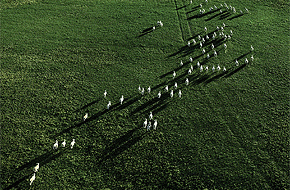
By Allan Barber
Next year will be an interesting one for the red meat sector with highlights predicted to include improved sheepmeat prices compared with last season, the probability of a procurement battle for fewer lambs and prime cattle, continuing work with research funding and the efforts of new MIE sympathetic directors on the boards of SFF and Alliance.
The big question will be whether the discussions about industry restructuring will actually achieve anything and how much impact the new cooperative boards can have on those efforts.
So far we know SFF, Alliance and ANZCO have already talked to the government about introducing some form of tradable slaughter rights, but have been rejected.
There is support for a merger of the two cooperatives from a number of farmers, although retiring chairman, Eoin Garden, stated at the AGM on 18th December that a merger wasn’t necessarily the right answer.
He said there was no point in creating a bigger version of the same thing, but there was a need for an innovative structure to deliver a ‘great’ outcome.
PwC have been commissioned to write a strategic review and will report to the board midway through the season which I assume means around Easter. Industry restructuring, including a merger, will be among the options looked at in the review.
Federated Farmers has entered the debate with its proposed Meat Options Paper to be released in the New Year after farmers have been given the opportunity to have their say.
The paper will cover three different types of option – Processor focused, Behaviour focused and Marketing focused – although the preferred option may be a ‘pick and mix’ from all three.
Meanwhile SFF will apply strict focus to its cost structures, notably the increase in staff earning more than $100,000.
The AGM was informed that salaries this year had actually declined because of the at-risk component of many of the salaries, although the 2013 result contained bonuses earned the previous year. Given the extent of the 2012 loss, I am puzzled by this claim.
However SFF has applied a salary freeze for one year to all management salaries, while it tries to reduce debt through cost reductions, land disposals and exiting some livestock financing arrangements.
After wearing inventory write downs across the last two balance dates, SFF entered the current financial year with inventories largely sold down and a new policy of selling into the market at current values to increase stock turn and reduce losses on disposal.
Common sense at last?
-------------------------------------------------------------------------------------------------------------------------------------------
Farms For Sale: the most up-to-date and comprehensive listing of working farms in New Zealand, here »
-------------------------------------------------------------------------------------------------------------------------------------------
SFF is determined to stick to its expensive branding strategy which has undoubtedly cost a lot more than it has earned since its launch three years ago.
Even now it is reported to make up only 1% of turnover, although it has achieved compound gains of more than 30% in each of the last two years, albeit from a very low base.
Garden said in reply to a question that when it contributes 10% of turnover, ‘the rubber will really hit the road and the balance sheet will be so different’. It will be interesting to see what PwC makes of this in its strategic review.
The as yet unanswered questions from all this are how SFF will meet its banking facility covenants of reducing term and seasonal debt by $98 million by 30 September in a season of lower livestock numbers and vigorous procurement competition, while maintaining substantial marketing investment.
A salary freeze, a few land sales and reduced livestock financing won’t do a lot to pay the finance bill ($28 million in 2013), let alone meet the banking demands.
Plant closures, while expensive, are the only way to reduce costs and get overheads aligned with stock numbers.
From a broader industry perspective, it will be interesting to gauge how well all companies cope with the expected scenario of lower stock numbers, higher procurement costs, and improved market returns against the backdrop of the stubbornly high dollar.
I can’t see anyone making a fortune in the 2014 year, but those who do best will have the best cost structures and the lowest debt.
Here’s looking forward to the New Year!
---------------------------------------------------------------------------------------
Here are some links for updated prices for
- lamb
- beef
- deer
- wool
No chart with that title exists.
---------------------------------------------------------------------------------------
Allan Barber is a commentator on agribusiness, especially the meat industry, and lives in the Matakana Wine Country where he runs a boutique B&B with his wife. You can contact him by email at allan@barberstrategic.co.nz or read his blog here ».




We welcome your comments below. If you are not already registered, please register to comment.
Remember we welcome robust, respectful and insightful debate. We don't welcome abusive or defamatory comments and will de-register those repeatedly making such comments. Our current comment policy is here.